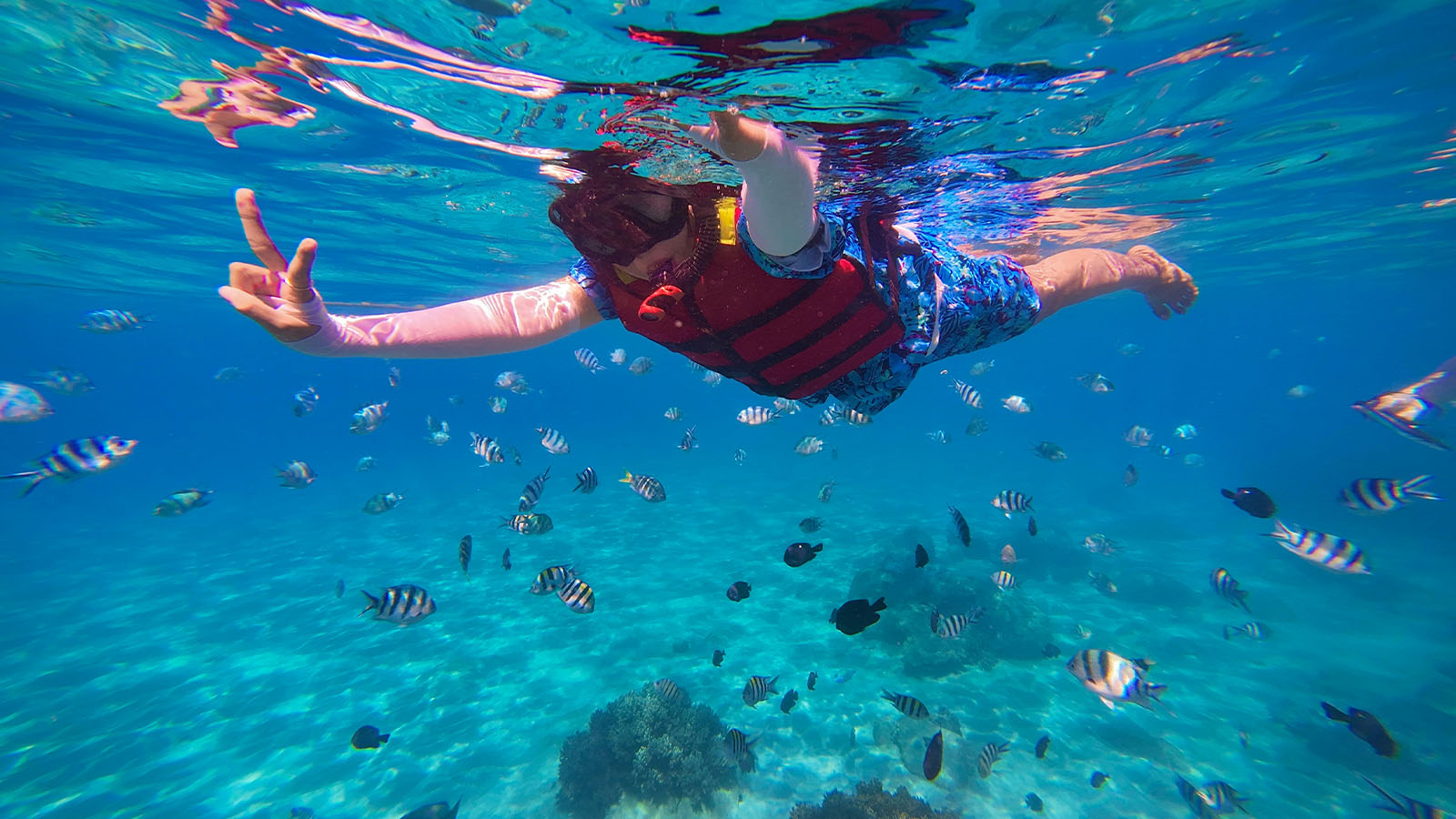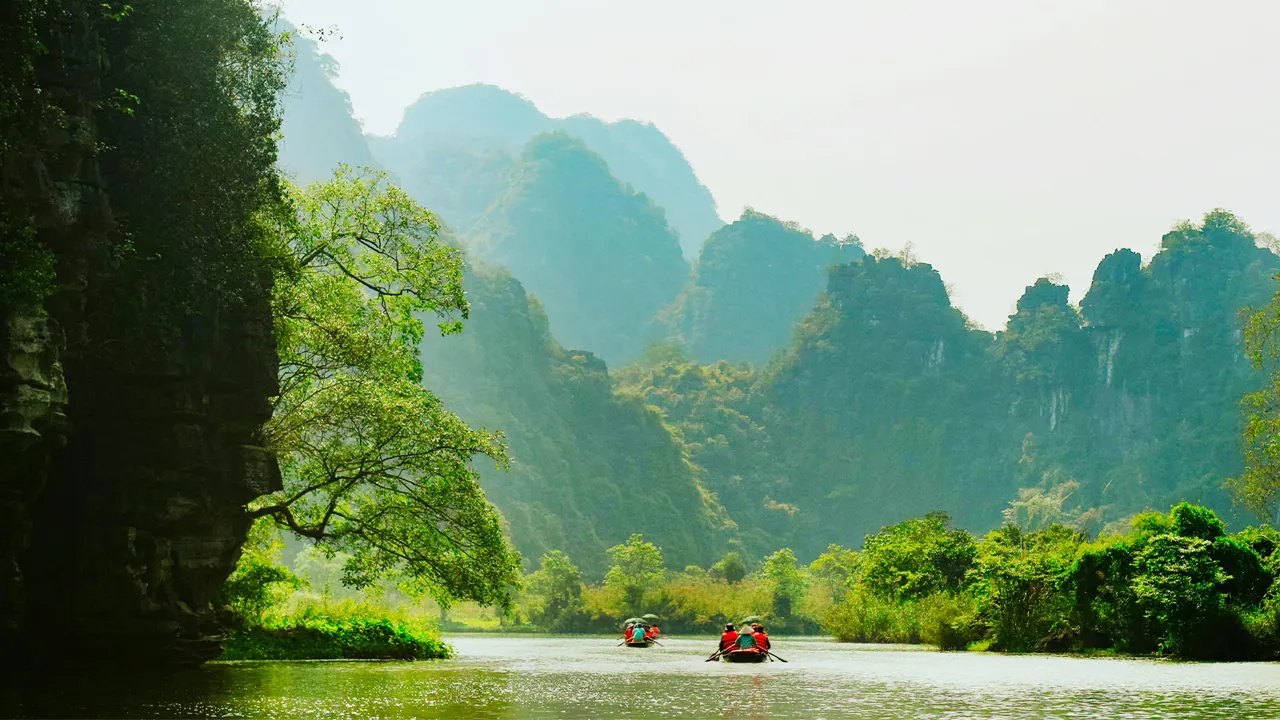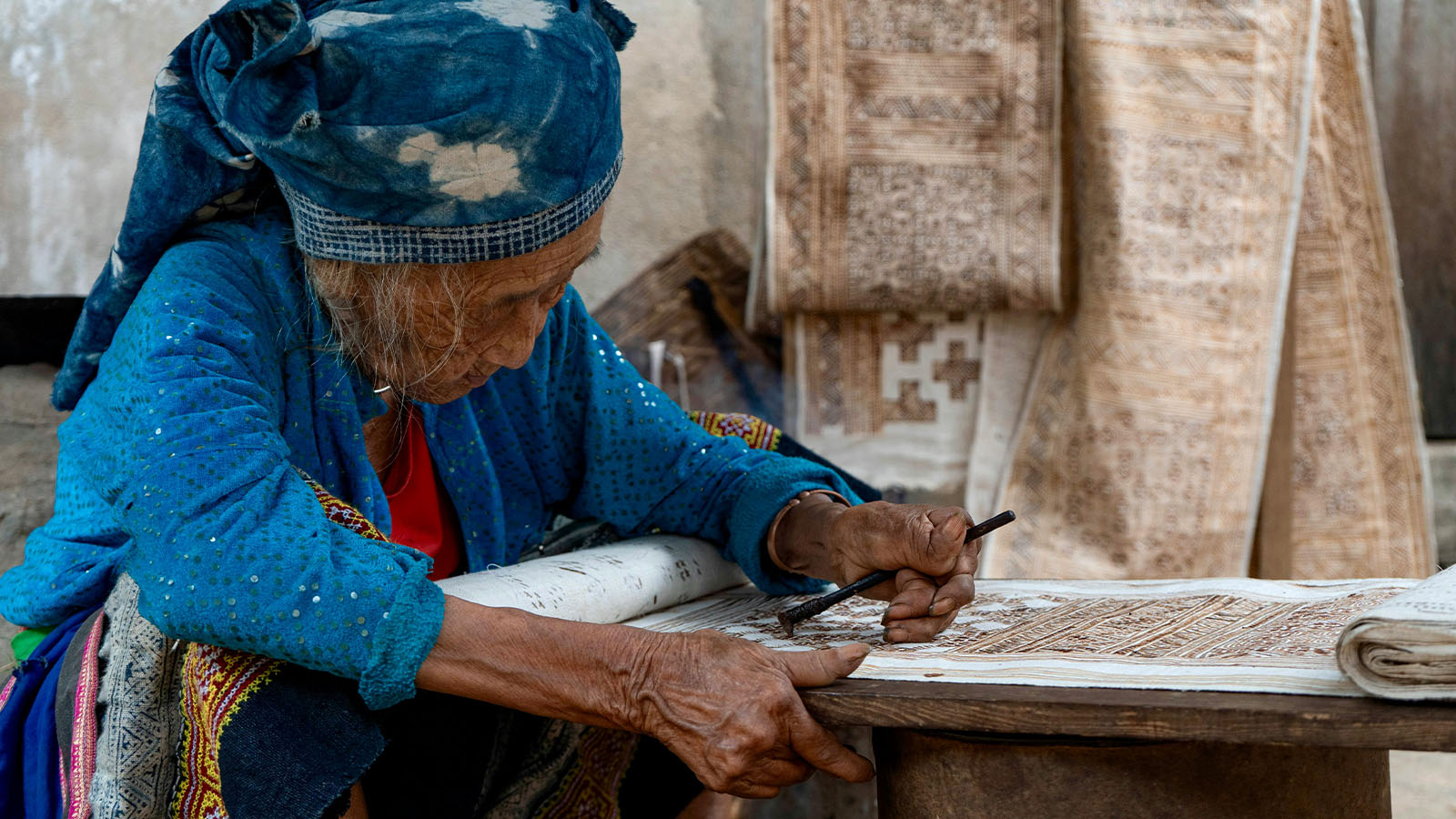What to Wear in March in Vietnam for Every Region
Vietnam is a great country to visit in March. The weather is steady across all three regions, and the skies are mostly clear. You won’t deal with heavy rain or extreme temperatures. In the north, spring is arriving, so it’s still cool in the mornings and evenings. Central Vietnam enjoys sunny days and beach weather. The south stays warm and dry, perfect for exploring the Mekong Delta or relaxing on Phu Quoc Island.
March is also outside the peak Tet holiday season, so prices are fair and places are less crowded. You can explore cities, mountains, beaches, and temples in the same trip. But before you go, it’s important to know what to pack and wear. You’ll be moving through different regions and climates, and it’s best to be prepared. In this guide, we’ll break down what to wear in March in Vietnam for every region to help you travel smarter and more comfortably.
Overview of Vietnam’s weather in March
March is one of the best months to travel in Vietnam. The weather starts to warm up in the north, stays dry and pleasant in the center, and continues to be sunny and hot in the south. You can explore the country with fewer weather-related problems, and it’s easier to pack for different destinations.
In Northern Vietnam (Hanoi, Ninh Binh, Ha Giang, Sapa), early March still feels cool, especially in the mountains. Hanoi may see daytime temperatures around 20–25°C (68–77°F), but mornings and evenings can feel chilly. In places like Sapa or Ha Giang, it can still drop to around 10–15°C (50–59°F) at night. Fog and light drizzle may happen, especially in higher areas.
In Central Vietnam (Hue, Da Nang, Hoi An, and Quy Nhon), the weather improves a lot compared to the winter months. The rainy season ends, skies become clearer, and temperatures rise. Expect daytime temperatures between 24–30°C (75–86°F). You can enjoy the beach or walk around the cities without dealing with constant rain. Some parts like Da Nang may still feel a little windy in the evenings, but it’s nothing serious.
In Southern Vietnam (Ho Chi Minh City, Mekong Delta, and Phu Quoc), March is hot and dry. It’s part of the dry season, so you can expect a lot of sunshine and clear skies. Temperatures often stay around 30–35°C (86–95°F), and humidity starts to go up again. You will sweat, so it’s important to dress for the heat and drink enough water. If you’re heading to islands like Con Dao or Phu Quoc, the weather is perfect for swimming and sunbathing.
What to Wear in March in Northern Vietnam
In Northern Vietnam, March still feels like late winter or early spring. In Hanoi and places like Ninh Binh or Mai Chau, you might see cool mornings and evenings, but the days start to warm up. If you plan to visit the mountains—Sapa, Ha Giang, or Moc Chau—be ready for colder nights and damp weather.
We suggest wearing:
Light sweaters or long-sleeve shirts for the early mornings and nights
T-shirts or breathable tops during the day, especially in Hanoi
A light jacket or windbreaker, especially for Sapa or Ha Giang
Long pants for comfort and warmth in the north
Closed shoes or trekking shoes if you’re going to hike or walk in nature
A compact umbrella or light raincoat for occasional drizzle
A scarf or shawl can help you stay warm and is useful for temple visits
Layering is the key here. The weather can feel cold in the morning, warm at noon, and then cool again. If you’re heading into the mountains, don’t underestimate how chilly it can get at night.
What to Wear in March in Central Vietnam
Central Vietnam becomes much more enjoyable in March. Rainfall is low, skies are usually clear, and the temperature is just right for exploring cities or relaxing at the beach.
We recommend packing:
Short-sleeve shirts or breathable tops for daytime
A light sweater or long-sleeve layer for Hue or Da Nang in the early morning or night
Comfortable walking shoes or sandals for exploring Hoi An or ancient sites
A swimsuit if you plan to hit the beach or the hotel pool
A sun hat, sunglasses, and sunscreen for protection during sunny days
Light pants or skirts—you don’t need heavy clothing here
If you plan to explore temples or pagodas, bring something to cover your shoulders and knees. In general, March is an easy month to dress for in this region. You won’t have to worry about rain as much, and you can stay light and comfortable.
What to Wear in March in Southern Vietnam
Southern Vietnam is hot and dry in March. Cities like Ho Chi Minh, Can Tho, and Phu Quoc will see high temperatures and strong sun. There is very little rain, so you won’t need rain gear, but you will need to protect yourself from the heat.
Here’s what we suggest:
Lightweight, breathable clothing: cotton and linen work best
Loose-fitting T-shirts, tank tops, or short-sleeve shirts
Shorts, skirts, or light trousers
Sandals or open-toe walking shoes
A wide-brimmed hat or cap for sun protection
Sunglasses and strong sunscreen
A swimsuit for island trips or hotel pools
You’ll sweat a lot, especially in the cities. We recommend wearing clothes that dry fast and don’t stick to your skin. You might want to pack extra shirts if you’re out all day. If you plan to visit temples or pagodas, wear clothes that cover the shoulders and knees.
Accessories & Extras to Pack
Here’s a list of essentials you should bring in March:
For All Regions
Lightweight scarf or shawl—You’ll need it when visiting temples or pagodas where you must cover shoulders. It also works for sun protection or during breezy nights.
Compact umbrella or foldable raincoat—Northern Vietnam and the highlands can still get light showers in March. A small umbrella won’t take much space.
Sunscreen (SPF 30+)—The sun starts getting stronger in March, especially in central and southern Vietnam. Bring reef-safe sunscreen if you plan to swim.
Insect repellent—Mosquitoes aren’t everywhere, but they do show up near rivers, rice paddies, and gardens. Spray or lotion works.
Refillable water bottle—Staying hydrated is important, especially if you're walking a lot or going on day tours. Consider one with a filter if you’ll be in rural areas.
Sunglasses and a wide-brim hat or cap – Great for sunny days, especially in Central Vietnam’s beach towns or while exploring city streets.
Wet wipes or hand sanitizer—Not all public restrooms are well-stocked, especially in remote areas or on long bus rides.
Universal power adapter—Vietnam uses 220V and mainly Type A, C, and D plugs. Bring a multi-use adapter if you're coming from outside Asia.
Light daypack or foldable tote bag – Handy for day trips or market shopping. Pick something waterproof if possible.
Earplugs or noise-canceling earbuds—Cities like Hanoi or Ho Chi Minh City can be loud, especially at night. A lifesaver for light sleepers.
For Specific Activities
Dry bag—If you’re planning boat rides, kayaking, or beach time, a small dry bag protects your phone and valuables.
Power bank—Some treks or bus rides can last several hours. Don’t rely on finding an outlet.
Quick-dry towel – Useful for beaches, swimming holes, or even spontaneous hikes.
Travel-size laundry detergent sheets—These are helpful if you want to pack light and wash your clothes in a hotel sink.
Small first aid kit—Include band-aids, stomach meds, and something for mild allergic reactions. Pharmacies are easy to find, but it’s good to be prepared.
Mask or face covering—Air pollution in big cities like Hanoi or Saigon can be noticeable during traffic. Also useful for dusty areas or markets.
Foldable shopping bag—Markets don’t always provide bags. Having your own is eco-friendly and handy.
We always say: don’t overpack, but don’t underprepare either. March offers a lot of travel opportunities in Vietnam, and having the right extras can make the difference between a good trip and a great one.
Tips for traveling in Vietnam in March
March is one of the best months to explore Vietnam from north to south. The weather is drier, the skies are clearer, and it’s not too hot yet. It’s also the tail end of the peak travel season, so you get good weather without the holiday crowds.
Here are a few tips:
Book transport and hotels in advance if you’re visiting popular places like Ha Long Bay, Da Nang, or Phu Quoc
Expect crowds at major tourist sites but not as busy as January or February
Be mindful of temple dress codes—bring something to cover shoulders and knees
Pack light but layer if you’re moving between regions—the weather changes a lot
Bring cash for small towns or rural areas—not everywhere accepts cards
Get travel insurance that covers outdoor activities if you plan on hiking or motorbiking
Wake up early to enjoy cooler weather and fewer tourists, especially in big cities
Drink plenty of water and use sunscreen often—sunburn and dehydration are common
If you’re into photography, this is a great time of year. The north is cool and dry, and the beaches in the central and southern parts are beautiful under the clear skies.
FAQs about what to wear in Vietnam in March
Is Vietnam cold in March?
No, Vietnam is not cold in March. In the north, places like Hanoi can still feel cool in the early mornings and evenings, with temperatures around 17–22°C. In the central and southern regions, it feels warmer and more comfortable during the day, with daytime temperatures ranging from 25 to 32°C. Sapa and the mountains in the far north can still be chilly at night, but it’s not freezing. You won't need heavy winter coats, but a light jacket or sweater helps in the north.
What should female tourists wear in Vietnam?
We suggest packing clothes that are comfortable, modest, and suitable for hot and humid weather. Loose pants, cotton t-shirts, midi dresses, or breathable tops are great. In cities and tourist areas, shorts and sleeveless tops are fine, but always carry a light scarf or shawl for religious sites. You don’t need to dress too conservatively, but showing too much skin in temples or rural areas can feel disrespectful to locals.
Is there a dress code for tourists in Vietnam?
There’s no official dress code, but locals usually dress modestly, especially outside of big cities. For religious sites like pagodas, temples, or historic places such as the Imperial City in Hue, you should cover your shoulders and knees. Outside of those places, you can wear casual summer clothes. Just be respectful of the setting.
Is Vietnam good to visit in March?
Yes, March is one of the best months to visit Vietnam. The weather is dry, comfortable, and stable across most regions. It's not too hot in the south, not too cold in the north, and there's very little rain. It’s also less crowded compared to peak months like December or January. You can go trekking in the north, enjoy the beaches in Da Nang or Nha Trang, or explore the Mekong Delta. March gives you a lot of options.
Conclusion
March gives you the chance to enjoy Vietnam from top to bottom without the hassle of extreme weather or big crowds. If you plan well, you can experience mountains, beaches, cities, and rivers in one trip. Just make sure to pack for different conditions. Northern Vietnam may still feel like spring, while central and southern Vietnam bring sunshine and heat.
We hope this guide on what to wear in March in Vietnam for every region has helped you get a clear idea of what to bring. If you’re ready to see Vietnam for yourself, now is a great time to book a tour. You’ll get the best of Vietnam in one of the best months to visit.
>>> Where to Buy Clothes in Vietnam: Cheap, Wholesale, Tailor-Made and More
Send us your comments about : What to Wear in March in Vietnam for Every Region
Required fields *
You might also be interested
Our clients’ favorite journeys to customize
Looking for inspiration? Discover some of our most popular tours in Vietnam, highly appreciated by our travelers. They are a great starting point to help you choose the perfect journey through Vietnam, Laos, Cambodia, Myanmar, or Thailand—whether you’re traveling solo, as a couple, with family, or with friends.
And since this is your trip, feel free to customize it just the way you like!
Vietnam Cambodia Itinerary 14 Days
Hanoi – Hoa Binh – Mai Chau – Ninh Binh – Halong bay – Hue - Danang – Hoian – Saigon – Ben Tre - Can Tho – Saigon - Siem Reap Angkor - Tonlé Sap - Siem Reap – Ta Prohm - Departure
Vietnam 14 Day Itinerary
Vietnam 14-day itinerary covers the country’s top highlights and quintessential experiences for an unforgettable journey.
Honeymoon Tour Packages In Vietnam 12 Days
Saigon Arrival - City Tour – Mekong Delta – Danang – Hoian - by flight - Da Nang – Hanoi - by flight – Halong - overnight on junk – Departure
Authentic Hoang Su Phi Trekking Tours
Hoang Su Phi trekking tours take you to stunning terraces, meet few tourists, connect with locals and enjoy authentic culture.
Best Nha Trang Beach Tour 4 Days
Saigon/Hanoi – Nha Trang relaxation – Saigon/Hanoi – Departure
Mekong Delta Bike Tour Itinerary 7 Days
Cycle through the Mekong Delta in 7 days, discovering floating markets, orchards, craft villages, and tranquil green islands.
Are you interested in this tour?






































Comment